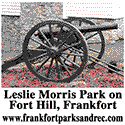|
Civil War’s animal casualty rate
surpassed even that of its soldiers
It’s estimated that the Civil War claimed some 620,000 lives, perhaps as many as 700,000. But the fatality rate for the animals that were the backbone of the war was even greater.
It’s estimated that some one million horses and mules were killed, with more horses being killed at the beginning of war than men.
If superior numbers were sufficient to win, the Union should have been triumphant early on as Federal states possessed about 3.4 million horses compared to approximately 1.7 million for the Confederacy. Horses moved artillery, ambulances and wagons, carried generals, cavalry troops and messages.
Union Major Gen. William T. Sherman was among those leaders who emphasized the importance of the animals. “Every opportunity at a halt should be taken to cut grass, wheat or oats and extraordinary care be taken of the horses upon which everything depends.”
Southern riders and horses were thought to be superior as Southerners rode more miles and more often than urban northerners. Also, horse racing was more popular in the South, leading to better breeding.
In the North, few wanted to take their plow horses to war and volunteered for the infantry instead. Not surprising, the Federal states had only six cavalry regiments at the start of the war, but by the end of 1861, Northern states had 82 volunteer cavalry units. However, Union horses still were thought to be inferior to Southern mounts.
In both armies, if a cavalryman’s horse was injured or killed, he would be sent to seize one from a nearby farm. Because most fighting was in the South, Federal troops seized horses as remounts from the Confederacy quite often.
Kentucky was a prime state for confiscation and theft of horses as the Commonwealth and Missouri had some 800,000 animals. Also, there were some 200,000 mules in the two states.
Feed for horses and mules could be a problem. A Union brigadier general once reported that 800,000 pounds of forage and grain were needed daily for his brigade’s animals. As a wagon usually carried one ton, the animals’ daily food allowance required 400 wagon loads per day.
Grain (oats, corn or barley) often was not available and pasturage sometimes was available, but green grass and field plants were not necessarily efficient foods. Eighty pounds of pasturage was needed to match the nutritional value of 26 pounds of dry hay and grain, a prescribed daily ration. And, too much green grass could cause foundering (lameness).
Horses received no hay on their forced marches, ate only about eight pounds of grain when a normal ration would be ten pounds, and often drank from bloody streams that also were muddied by their very passage.
It’s probable that breeds native to and developed in the South – such as the Tennessee Walker and the American Saddlebred – were most widely used by the Confederacy as their gaits were smooth and comfortable and they had tremendous endurance.
The horses used by the North were most likely ordinary carriage and riding horses since no particular breed has ever originated from the North.
Morgans may have been widely used on both sides. They were small and compact with good endurance a by-product of those qualities.
Artillery and saddle horses had to endure ample danger in battle.
An effective tactic when attacking a battery was to shoot the horses harnessed to it. If the horses were killed or disabled, moving the guns was impossible.
Unfortunately for the horses, they could take much punishment. They were difficult to bring down and keep down, even with the impact of large-caliber minie bullets. In one 1864 battle, one horse was shot seven times before it fell and stayed down.
Most horses were lost to disease and exhaustion. Glanders was a highly contagious and widespread disease that affected an animal’s skin, nasal passages and respiratory tracts.
A healthy single horse could pull a load of 3,000 pounds 20-23 miles per day over a hard-paved road. The weight dropped to 1,900 pounds on a macadamized road and was 1,100 pounds over a rough terrain. Pulling capacity was reduced by one half if a horse carried a rider on its back.
Not surprisingly, horses needs came first at the end of a day.
“Whether plodding through choking dust, struggling through mud, rushing at a gallop or creeping backward in a withdrawal, horses did what they had to do,” one Civil War officer wrote. “They served their masters.”
|











